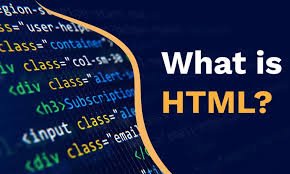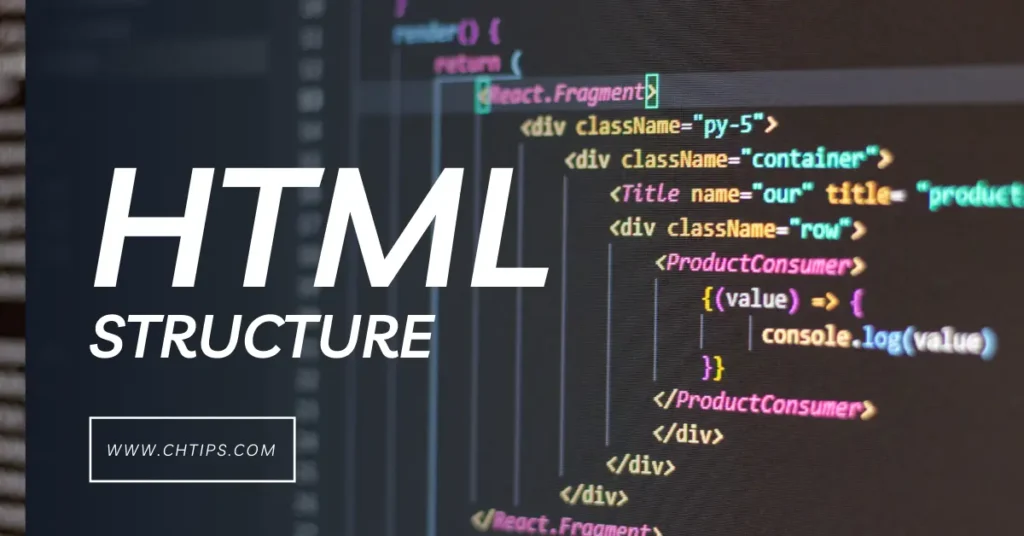Knowing HTML fundamentals is the initial step towards creating websites. HTML, also known as HyperText Markup Language is the base of every website you visit online. It provides structure to web pages and instructs browsers on what to display, including text images, headings and various other elements. If you’re looking to create personal blogs, an enterprise site or even understand the way websites function, knowing HTML is vital.
What Is HTML?

HTML refers to HyperText Markup Language. It’s not a programing language, but rather a markup language which uses tags to identify the elements that appear on a website. They act as a set of instructions to browsers, instructing them on what to show on the page. Each website, regardless of the level of sophistication, begins by using a basic HTML structure.
Every element of HTML is represented with the form of a tag that is contained with angle brackets. Tags are typically used in pair that is, the opening tag and the closing tag, and the text is put between them. In the case of a paragraph, it is composed using a start and an end tag.
HTML is the basis for HTML that HTML provides, while different technologies such as CSS and JavaScript provide style and functional.
The Basic Structure of an HTML Document

Each HTML webpage has a distinct design that informs that browser how to read the contents. The page starts with a declaration that describes it as an HTML document. Within the tags that comprise the primary content it is divided into two main areas which are called head and body. head as well as the body.
Head section: The section titled head section includes meta data regarding the document, such as titles, descriptions as well as the character encoding. The body section houses everything that is visible on the page comprising text, headings hyperlinks, lists and.
This design allows web browsers to display content correctly and render it in a way that is understandable to the users.
Understanding HTML Elements and Attributes
HTML makes use of elements to identify different components of a web page. Each element is assigned a particular purpose. In this case, for example, there are components for headers, paragraphs or hyperlinks, lists and much more.
Attributes are additional data regarding elements. They’re written in the tag’s opening and can alter how an element functions. A link, for instance, tag might contain an attribute that identifies the direction to which it leads. They are important as they provide function and control to the web pages you use.
Common HTML Elements
There are many crucial HTML tags that are used to create the pages. A few of them are:
- headings used for subtitles and titles. They range from H1 (main heading) up to H6 (smallest).
- Paragraphs used to organize text in easily readable segments.
- Links Links from one website with another, creating a links between web pages.
- lists: Useful for organizing things in an ordered or unorganized format.
- Imagery: Used to display photos or images.
- Sections and Divisions used to link the same content.
- Formulas Users can input data, like names, email addresses or any other comments.
Utilizing these elements properly can help to organize your website and increase accessibility.
The Importance of Semantic HTML
Semantic HTML refers to the method of using elements which define their function clearly. Examples include the heading element to represent the top part of a webpage and an footer to the bottom as well as articles as well as sections elements to organize content.
Semantic HTML assists both screen readers comprehend your site’s design. It does not just improve accessibility for people who are disabled, but it also improves your search engine’s visibility.
Accessibility in HTML
accessibility ensures that your site is accessible to everyone and includes people who have disabilities. Simple actions like including alt texts to pictures, including descriptions for link text and the proper arrangement of headings can make an enormous impact.
When you write HTML When writing HTML, make sure to focus on an organized hierarchy and clear flow. Screen readers depend on the correct heading sequence, therefore the inability to follow heading levels, or use the same heading levels in a different way can make navigation challenging.
Accessibility isn’t only moral, but is also essential in search engine optimization as well as users’ experience.
HTML Best Practices
Although HTML is an easy language to master but using it correctly is a matter of attention to detail. Here are some of the best methods for creating clean and clear HTML:
- Make sure that your code is properly indented and arranged.
- Lowercase letters are used for tags as well as attributes.
- Make sure you use meaningful names for classes as well as ID attribute.
- Beware of tags that are outdated or attributes that are no longer relevant.
- Distinguish design from structure through keeping CSS separate in a separate document.
- Make sure you validate your HTML on a regular basis to correct errors and increase efficiency.
A good HTML can be viewed by machines and humans. Structured code is much easy to modify and maintain your site for the future.
Why Learn HTML?
Understanding HTML allows you to control what content you see on the internet. You are able to design and edit websites, comprehend the fundamental structure of websites, and collaborate better with web designers.
However, if you are using site creators or CMS systems The knowledge of HTML can help you resolve formatting problems, modify layouts and personalize websites beyond templates.
HTML is also the basis for understanding various web technologies such as CSS as well as JavaScript. Once you have mastered HTML then the remainder of web development becomes easier to comprehend.
The Evolution of HTML
Since its inception at the beginning of decade of the 1990s HTML changed significantly. Today, HTML5 includes features like video as well as audio, forms and dynamic design, without the need for the use of plugins. The advancements in HTML5 have allowed for the creation of websites that are faster, more user-friendly and attractive websites.
Nowadays, HTML is more refined and efficient, allowing web the developers to design rich and engaging web experiences, while also keeping websites light and fast.
Conclusion
Learning HTML fundamentals is the initial step towards comprehending how the web functions. It’s easy and powerful providing structure and significance to all web-based content. If you can master the art of utilize tags, elements and attributes in a way that is appropriate and correctly, you’ll be able to build the basis for your website.
HTML isn’t just a code it’s also the technology behind the web. If you have a solid grasp of the basics of HTML, you will be able to effectively create pages for your website optimize SEO, boost access, and share your concepts with the world via an electronic format.




